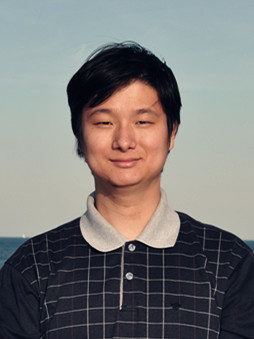教育经历:
2007 - 2012,博士,生物学,杜克大学
2003 - 2007,学士,生物技术,复旦大学
工作经历:
2018 - 至今,研究员,金沙威尼斯欢乐娱人城,生命科学联合中心
2014 - 2018,助理教授,爱荷华州立大学
2013 - 2014,博士后,杜克大学 在基础研究方面,主要致力于阐明植物中应激颗粒的形成机制、生物学功能和进化学意义。应激颗粒是一种重要的转录后和翻译调控方式。对哺乳动物细胞的研究表明,应激颗粒与神经退行性疾病、肿瘤凋亡、病毒侵染、免疫、炎症反应等密切相关。然而,应激颗粒在植物中的功能有待解析。本实验室综合运用细胞生物学、分子生物学、蛋白质组学、基因组学和生物信息学等手段发现了植物诱导应激颗粒形成的分子学机制、解析了植物应激颗粒的蛋白组分并对其生物学功能进行了探索。
在作物研究方面,主要关注大豆根系生物钟与大豆孢囊线虫互作的分子机理。近年来对于植物生物钟的深入研究确立了其在拮抗叶片病原体中的关键作用。而对于植物生物钟和根系病原体之间的互作知之甚少。因此解析植物根系生物钟与孢囊线虫之间的互作及相关信号转导途径将填补这一重要的空白。孢囊线虫是目前限制大豆产量最主要的病虫害。每年在全球造成数十亿美元的经济损失。对于孢囊线虫与大豆根系生物钟互作机理的理解将有助于发现拮抗孢囊线虫新的生物靶标。
在生物技术开发方面,本实验室结合Fabry–Pérot干涉仪原理、新型廉价纳米级Fabry–Pérot干涉仪制备技术以及专门针对小分子的核酸适体筛选方法已成功研制出具有高灵敏度、制备价格极为低廉的新型纳米感应器用于植物激素的定量测定。这类新型纳米探测器也可替代表面等离子共振仪用于定量分析分子互作。
1 Chen, C., Song, X., Yu, Y., Wang, X., Xu, H., Ji, W., Ma, J., Zhao, C., Feng, S.*, Wang, Y.*, Su, X.-d.* & Wang, W.* Aptamer-based nanointerferometer enables amplification-free ultrasensitive detection and differentiation of SARS-CoV-2 variants. Analytica Chimica Acta 1260, 341207 (2023). (*corresponding author)
2 Zhou, M. & Wang, W.* SOS1 safeguards plant circadian rhythm against daily salt fluctuations. Proceedings of the National Academy of Sciences 119, e2212950119 (2022). (*corresponding author)
3 Wang, W.* & Gu, Y.* The emerging role of biomolecular condensates in plant immunity. Plant Cell 34, 1568-1572 (2022). (*corresponding author)
4 Wang, X., Xu, Y., Zhou, M.* & Wang, W.* in Modeling Transcriptional Regulation: Methods and Protocols (ed Shahid Mukhtar) 215-225 (Springer US, 2021). (*corresponding author)
5 Li, M., Cao, L., Mwimba, M., Zhou, Y., Li, L., Zhou, M., Schnable, P. S., O`Rourke, J. A., Dong, X.* & Wang, W.* Comprehensive mapping of abiotic stress inputs into the soybean circadian clock. Proceedings of the National Academy of Sciences of the United States of America 116, 23840-23849 (2019). (*corresponding author)
6 Chen, C., Feng, S., Zhou, M., Ji, C., Que, L.* & Wang, W.* Development of a structure-switching aptamer-based nanosensor for salicylic acid detection. Biosensors and Bioelectronics 140, 111342 (2019). (*corresponding author)
7 Feng, S., Chen, C., Wang, W.* & Que, L.* An aptamer nanopore-enabled microsensor for detection of theophylline. Biosensors and Bioelectronics 105, 36-41 (2018). (*corresponding author)
8 Song, C., Chen, C., Che, X., Wang, W. & Que, L. in 2017 IEEE 30th International Conference on Micro Electro Mechanical Systems (MEMS). 370-373.
9 Feng, S., Che, X., Que, L.*, Chen, C. & Wang, W.* in 2016 IEEE SENSORS. 1-3. (*corresponding author)
10 Zhou, M.*, Wang, W.*, Karapetyan, S., Mwimba, M., Marqués, J., Buchler, N. E. & Dong, X. Redox rhythm reinforces the circadian clock to gate immune response. Nature 523, 472-476 (2015). (*co-first author)
11 Yan, S., Wang, W., Marqués, J., Mohan, R., Saleh, A., Durrant, Wendy E., Song, J. & Dong, X. Salicylic Acid Activates DNA Damage Responses to Potentiate Plant Immunity. Molecular Cell 52, 602-610 (2013).
12 Pajerowska-Mukhtar, Karolina M., Wang, W., Tada, Y., Oka, N., Tucker, Chandra L., Fonseca, Jose P. & Dong, X. The HSF-like Transcription Factor TBF1 Is a Major Molecular Switch for Plant Growth-to-Defense Transition. Current Biology 22, 103-112 (2012).
13 Fu, Z. Q.*, Yan, S.*, Saleh, A.*, Wang, W., Ruble, J., Oka, N., Mohan, R., Spoel, S. H., Tada, Y., Zheng, N. & Dong, X. NPR3 and NPR4 are receptors for the immune signal salicylic acid in plants. Nature 486, 228-232 (2012). (*co-first author)
14 Wang, W.*, Barnaby, J. Y.*, Tada, Y., Li, H., Tör, M., Caldelari, D., Lee, D.-u., Fu, X.-D. & Dong, X. Timing of plant immune responses by a central circadian regulator. Nature 470, 110-114 (2011). (*co-first author)
 下载Firefox
下载Firefox
 下载Firefox
下载Firefox

 下载Firefox
下载Firefox